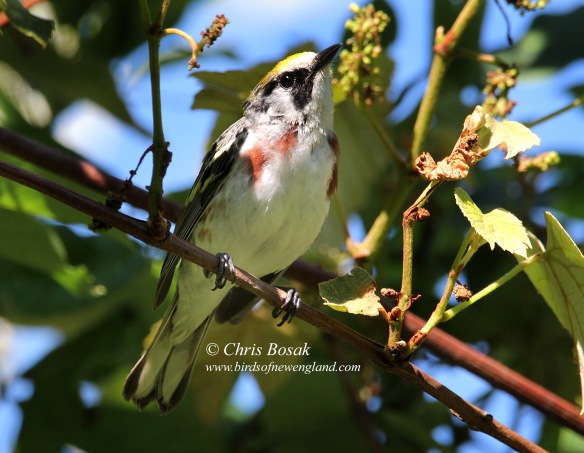
It was one of the better spring migrations I’ve had in a long time. I got out there more than in previous years and visited a greater variety of places.
The big week, of course, was the visit to Erie, Pennsylvania, during the peak of the migration season. I was there for my niece’s wedding but arrived several days in advance of the event to stay with my brother and visit Presque Isle State Park, a birding hot spot. We saw over 70 species of birds over the three separate visits.
I also hit my local New England spots several times a week during migration, starting in late March and going into June. It’s always interesting to see how the spring migration starts with a trickle of very few species and peaks with several dozen species all moving through at once.
I had a decent warbler season, which is always a goal of the spring migration. The local highlights included American redstart, chestnut-sided warbler, magnolia warbler, black-throated blue warbler and blackburnian warbler. Presque Isle warbler highlights included several bay-breasted warblers, Cape May warblers and Nashville warblers.
It always seems as though certain species are particularly plentiful some years. This spring, I had great luck finding wood thrushes, warbling vireos, yellow warblers and catbirds. Catbirds are always plentiful, but this year, it seems they are everywhere in high numbers.
In contrast, each year some birds seem to be less frequently seen than usual. We are into June, and I’ve seen only one hummingbird all spring – and that was at the local preserve. My feeder has been out and filled with fresh food since the middle of April, but so far, not a single visitor, at least not that I’ve seen. In previous years, they had been daily visitors starting in early May.
I usually see at least a few indigo buntings at the local preserve each spring. I know just where to find them and they are very reliable. This spring, one fleeting glance in poor lighting is all I’ve had of the electric blue songbird.
The yearly fluctuations of a single birdwatcher are certainly not a reliable way to gauge the health of a species. Just because I haven’t seen many hummingbirds or buntings this spring doesn’t mean there’s a problem with those species. I could be visiting at the wrong time, missing them right in front of me or not going to the right places. That’s what makes bird databases like eBird so valuable. The collective data from thousands of birdwatchers would pick up trends much more reliably than the musings of a single birdwatcher.
So now we head into summer. This is a good time of year to get out there and look for young birds. It’s always fun to watch parent birds raising their babies and teaching them the ways of the species. It’s also nice to know that any bird you see in the summer is likely breeding in the area. I love the birds that pass through on migration, but I have an even stronger affinity for those that stick around to raise their young.
As always, feel free to drop me a line and let me know your birding highlights.

So many here in yard as well when I take a call while outside those on the other end think I am raising birds. 🙂
LikeLike
Spring indeed has sprung and we absolutely enjoy our backyard warblers, and a host of others. We also have a bumper crop of hummingbirds pairs flitting through, noshing on the flower nectar available in our pollinators and the feeder. I envy you your past sightings of Indigo Bunting though you’ve found them seemingly scarce this season… I’ve lived in NH for my entire 68 years, these last 25 in the lakes region and have seen only 1 Indigo ever. Better one than none though ☺️
LikeLike